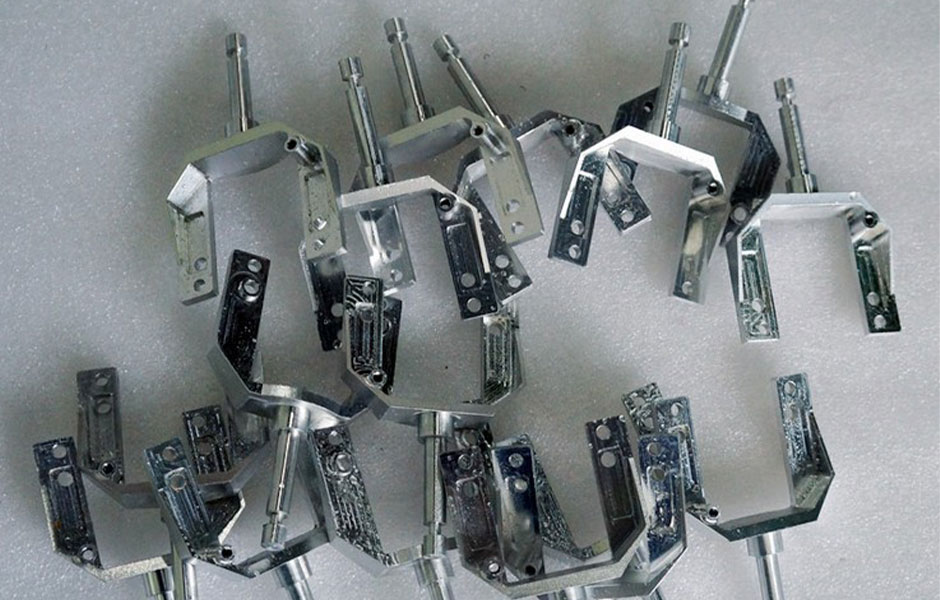Today the manufacturing process is far from what we know of them. The advancement of technologies like 3D printing and CNC machining change the way products are produced and customers’ expectations for production lead times have become shorter than ever. The complexity of the designs and the demand for customization are also changing the face of manufacturing. These changes have resulted in a gradual shift from mass production to low-volume manufacturing.

Low-Volume manufacturing usually involves a production range of 50 to 100K parts. Compared with the many risks and costs associated with excessive expansion to “large-scale commercialization,” low-volume manufacturing does reduce risks, make designs more flexible, shorten product launch times and create opportunities to save production costs. Low-volume manufacturing solutions benefit all stakeholders in the entire product life cycle from design to manufacturing to the supply chain and consumers.
Advantages of Low-Volume Manufacturing

- It offers an Option to Bridge Production.
Low-volume manufacturing provides avenues to scale up production. For instance, it bridges production by improving a prototype until it becomes better or perfect. Therefore, if the outcomes of the last product are impressive, it may lead to increased orders, and demand becomes steady for years.
Low volumes reduce market time. It also saves the stress of investing in individual machines for handling enormous quantities. Besides, small-volume production can turn into high-volume production. Thus, generating more revenue as long as the product reaches the market fast.
- The Process Reduces Time to Market
Technology is changing, which means there is a constant demand to keep innovating. This leaves product developers with the cumbersome task of designing and redesigning. If not, their product loses market relevance.
But low-volume manufacturing eases the pressure on developers. It reduces the inventory burden by only producing what is sellable and sustainable. The process increases the success rate and optimizes the supply chains. On the other part, it shortens lead times, which means products reach the market within days or weeks.
- The Process Reduces Cost which Saves Money
The popular belief is that, if you produce more, you save money, and that is not true. That theory only works when purchasing household items and not in manufacturing. Too, the cost per unit of an item is dependent on the material used.
Another way firms save money is when investing in tools. For example, if mass production needs hardened tool steel to fix the machines. It may prove expensive since it costs a lot to order a bunch of repair tools. Whereas in low volume, you only replace the worn part which costs less, and in return lowers the overheads.
Additionally, companies with mass volume production work with the least order. The reason is, in every production, they have to offset investment and set up costs. But, low-volume manufacturers have lower overheads, hence no minimum order. Thus, a company producing on a small scale avoids an outdated inventory. In case the design or market demand changes.
- Provides time for Design Improvement
Low-volume production provides an excellent option for flexible design improvement. For example, some design aspects may no longer appeal to customers. It’s easy to modify without a significant impact on the whole order. Yet, in mass production, design alteration affects the total order.
Applications of Low-Volume Manufacturing
- Low-volume sheet metal fabrication
- Custom CNC machined parts
- Quality customized products
- Plastic injection molded parts
- Functional prototypes, Production-grade engineering prototypes
- Rapid bridge tooling or bridge production
- Pre-production components for verification tests
Impact of CNC Machining on Low-Volume Manufacturing

CNC machining is arguably the best manufacturing technology in the world. It has played a vital role in the success of low-volume manufacturing. Plus, the two give the right solutions and assessments for scheduled mass production.
CNC machining offers a whole range of advantages to low-volume. They include high-precision machined parts and more extensive material selection. Also, it offers accuracy and repeatability to the process. So, it’s right to conclude, CNC machining gives low volume the edge in producing custom-made aluminum and CNC prototypes with ease.
What to Consider for Low-Volume Manufacturing?
Even though low-volume manufacturing is a quick-turn production method, there are also many factors that will determine if you should get started with low-volume manufacturing. The first one is the quantity, the production run of 50 to 100,000 parts is suited for the way. In addition, the complexity of the parts, materials, tolerances, surface finish, and more aspects should be considered. For example, the complexity will raise the cost of production, and the surface quality requirements will determine the machining process of post-processing techniques.
Get Ready for Your Next Low Volume Production Project?
We are a company that offers Low Volume Manufacturing Services, we aim to help you reduce the risks involved in production and improve efficiency to meet your needs from the early prototype R & D too late mass production. We have a dedicated team ready to handle any inquiry or question you may have, Contact us today for a free quote.